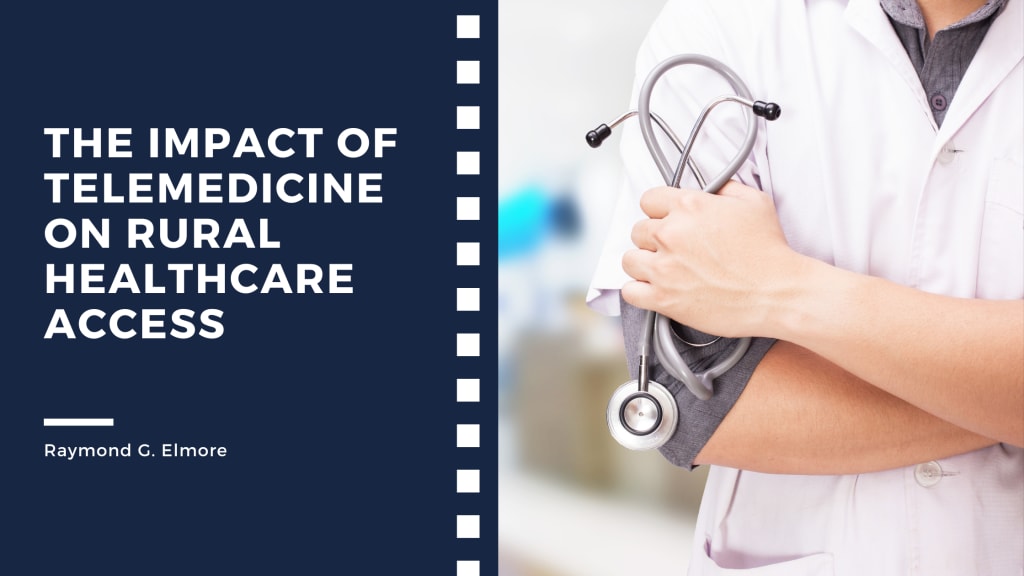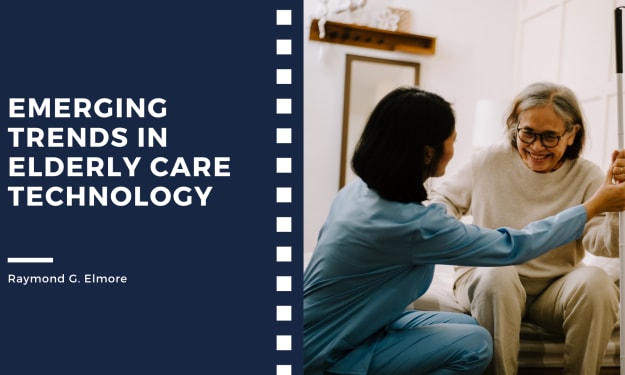The Impact of Telemedicine on Rural Healthcare Access
By Raymond G. Elmore

Though telemedicine has been around for decades, advancements in technology have placed the concept in a new and appealing light in recent years, especially in rural areas. Telemedicine is the use of technology to provide clinical services to patients without having to be physically present with the patient, and this has been exceptionally helpful in providing healthcare services to patients in remote areas that in the past could not easily access health facilities. Telemedicine is a growing concept, and this article seeks to describe the factors that make it effective in addressing access to healthcare in rural areas.
Bridging the Gap
The biggest strength of telemedicine is its effectiveness in addressing the issue of a lack of access to healthcare professionals for residents of rural areas. This is especially true in rural areas where patients often need help accessing the right specialists or healthcare practitioners. Telemedicine solves this problem by handling appointments in which the patient can talk to the healthcare provider through video, phone, or even apps. It also fosters a linkage that allows patients to receive required medical advice from specialists without having to travel long distances, hence time and resource conservation.
Improved Chronic Disease Management
There is evidence of the existing prevalence of chronic diseases, including diabetes, hypertension, and heart diseases, within the rural setting. These conditions demand follow-up and continual evaluation, which can be challenging in regions with scarce healthcare services. Closeness is achieved through telemedicine because patients can have frequent contact with their healthcare providers and easily convey important information on their health status at home. For instance, patients can use health monitoring devices that record their blood pressure or glucose levels and then send the data to the doctor. This proactive approach to chronic disease management can benefit health outcomes overall and reduce the instances of individuals needing an SOS call.
Enhanced Access to Specialists
One major challenge faced by patients in rural areas is the need for more access to specialists where they live; hence, they have to travel long distances to seek these services in urban centers. Telemedicine does away with this challenge since it connects patients to several specializations, such as cardiologists, dermatologists, and psychiatrists. It helps rural patients get expert opinions, second opinions, and specialized treatment within their communities without needing to travel. Besides, it enhances the quality of care that is being offered to clients and guarantees that patients are diagnosed on time and treatment is commenced on time, especially if the conditions being experienced are complicated.
Mental Health Services
Specialized mental health services are especially limited in rural populations due to embarrassment and the absence of specialists. Due to technological advancement, telemedicine has been used to deliver therapy sessions, counseling, and psychiatric consultations for mental health care. Through the use of telecommunication technology, patients can talk to mental health professionals without actually having to attend a mental health clinic. This can result in timely early intervention, proper management of mental ailments, and overall enhanced mental health among rural dwellers.
Cost-Effectiveness
Telemedicine could be an inexpensive model for patients and the healthcare systems. From the patient’s perspective, virtual consultations do not incur travel costs, allow for less time away from work, and require fewer plans for childcare. For healthcare systems, telemedicine can decrease the demand for the emergency department and reduce costs related to hospital readmissions by allowing for treatment before the onset of an emergency. Also, telemedicine platforms can enhance the effectiveness of the usage of medical resources as they enable specialists to attend to more patients without any location barriers.
Challenges and Limitations
However, telemedicine has several drawbacks and constraints mainly in the rural settings. One of the key challenges remains the poor Internet connection, which is crucial to the provision of telemedicine. Access to the internet in rural areas is usually characterized by low connection speeds, thus limiting the ability to perform efficient video consultations. It is crucial for initiatives that seek to increase broadband coverage in rural areas to be implemented.
Another challenge is a reluctance among both patients and healthcare workers to accept changes, including new technologies. Patients who are more reserved may not like the virtual consultation, they prefer physical touch while some healthcare providers may be reluctant to incorporate telemedicine into their practice due to certain factors such as technology adoption, reimbursement among others, and training. These issues can be resolved through educational campaigns, training of staff, and changes in legislation and rules that would promote the use of telemedicine.
Future Prospects
Telemedicine has the potential to progress in rural healthcare as technology continues to develop and its use becomes more widely understood. Ongoing capital to the broadband networks, in addition to continued efforts to increase awareness and education among patients and healthcare workers, will improve the expansion and utility of telemedicine services. Further, increased reimbursement for telemedicine and its incorporation into healthcare practice will be crucial in sustaining the technology.
Telemedicine is a solution to many issues related to healthcare in rural settings, such as connecting patients to physicians, improving how chronic diseases are monitored and treated, providing access to specialists, and reducing costs. Despite the existing barriers, the progression in telemedicine technology and the presence of such policies will help in creating a more inclusive and efficient health system for rural communities.
About the Creator
Raymond G. Elmore
Currently living in Santa Fe, New Mexico, Raymond G. Elmore is a licensed physician who has been practicing obstetrics and gynecology for over a decade. He is passionate about innovation and research.
Enjoyed the story? Support the Creator.
Subscribe for free to receive all their stories in your feed. You could also pledge your support or give them a one-off tip, letting them know you appreciate their work.






Comments
There are no comments for this story
Be the first to respond and start the conversation.